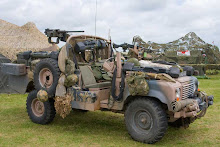History.
After the fall of Sarajevo on 16 April 1941 to Nazi Germany, the extremist Croat-nationalist and Fascist Ante Pavelić (who had been in exile in Mussolini's Italy) was appointed Poglavnik or leader of a new Ustaše state - Nezavisna Država Hrvatska (NDH, the Independent State of Croatia). The Yugoslav provinces of Croatia, Bosnia-Herzegovina and parts of Serbia were reconstituted as a pro-Nazi satellite entity under joint Nazi and Italian occupation. The Ustaše almost immediately launched a vicious campaign of violence directed at unarmed Serb civilians.
On 6 July 1941 Pavelić's Culture and Education Minister, Mile Budak, announced that the Ustaše considered the Bosnian Muslims an integral part of the NDH : "The Croatian State is Christian. It is also a Muslim State where our people are of the Islamic religion." Pavelić ordered a property in Zagreb be converted into a mosque that he modestly named after himself in his efforts to secure the loyalty of the Bosnian Muslims : the Poglavniks Mosque.[1]
Bosnian Muslim clerics issued three declarations (fatāwa), all publicly denouncing Croat-Nazi collaborationist measures, laws and violence against Jews and Serbs: that of Sarajevo in October 1941, of Mostar in 1941, and of Banja Luka on 12 November 1941 [2].
Despite Pavelić's assurances of equality, it wasn't long before many Bosniaks became dissatisfied with Croatian rule. An Islamic leader reported that not one Muslim occupied an influential post in the (local) administration. Fierce fighting broke out between Ustase and Partisans. A number of Ustase units believed that the Bosniaks were communist sympathizers and burned their villages and murdered civilians. Serb victims of the violence were inclined to view the Bosniaks as collaborators.
The Fall of 1942 saw SS Reichsfuhrer Heinrich Himmler and SS-General Gottlob Berger approach Hitler with the proposal to raise a Bosnian Muslim SS division. Both the Wehrmacht and the SS were concerned about the rapidly deteriorating security situation in the NDH that tied down German military personnel that could be better employed elsewhere. By the New Year of 1943 over 100,000 Bosnian Muslims had been killed (9% of all Bosniaks at the time) and 250,000 had been expelled from their homes - mostly by Serb Chetniks. "The Muslims" remarked one German General, "bear the special status of being persecuted by all others".[3]
Himmler fantasized that there was a fanatical, blind obedience in the Bosniaks. He thought that Muslim men would make perfect SS soldiers as Islam "promises them Heaven if they fight and are killed in action."[4] Himmler was also inspired by the noted successes of Hapsburg Bosnian infantry regiments in World War I.
George Lepre wrote : "Himmler endeavoured to restore what he called 'an old Austrian' tradition by reviving the Bosnian regiments of the former Austro-Hungarian army in the form of a Bosnian Muslim SS Division. Once raised, this division was to engage and destroy Tito's Partisan forces operating in North-eastern Bosnia, thus restoring local 'order'. To be sure, Himmler's primary concern in the region was not the security of the local Muslim population, but the welfare of ethnic German settlers to the north in Srem. 'Srem is the breadbasket of Croatia, and hopefully it and our beloved German settlements will be secured. I hope that the area south of Srem will be liberated by ... the Bosnian division ... so that we can at least restore partial order in this ridiculous (Croatian) state.' [5]
Hitler formally approved the project on 10 February 1943 and SS-Obergruppenführer Arthur Phleps, a Romanian ethnic German commander, was charged with raising the division.
Subscribe to:
Post Comments (Atom)






No comments:
Post a Comment